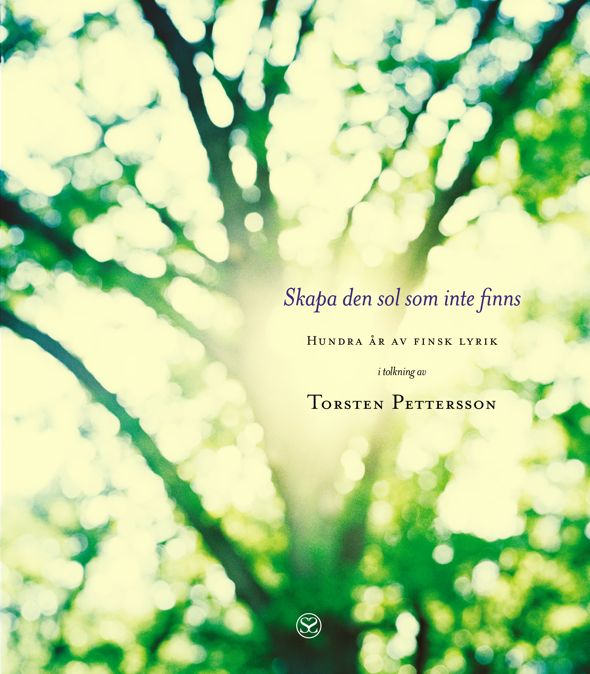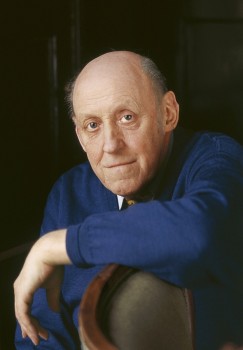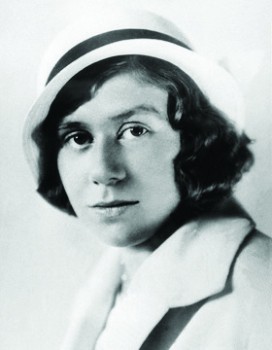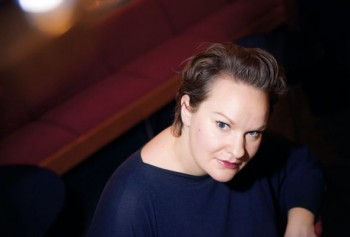Search results for "Edith S��dergran"
Dear reader,
11 February 2009 | Letter from the Editors
welcome to the new Books from Finland website. After 42 years in print, we now navigate virtual worlds. However much Books from Finland may have changed in appearance, though, its essence remains the same – as always, we try to provide you with interesting, well-translated things to read. Made in Finland, or about Finland. More…
An intimation of Paradise
31 December 1984 | Archives online, Fiction, poetry
Poems from Paratiisiaavistus (‘An intimation of Paradise’, 1983). Introduction by Pertti Lassila
Satu Salminiitty (born 1959) has published only one collection of poetry since her first appeared in 1981, but with these two volumes she has achieved considerable success. She writes with a fine rhetoric using language and rhythm that are far removed from those of spoken Finnish. Religious pathos has a prominent place in her work, and her poems often derive from praise, prayer or even magic incantations; Salminiitty is a creator of vision who trusts to her metaphysical intuition, a quality not generally discernible among today’s Finnish poets. Equally rare is her lively faith in the goodness and beauty of people and of the world. A conscious rejoinder to materialism, pessimism and fear of the future can be read in her poems. More…
Bombast and the sublime
17 January 2013 | Reviews
 Torsten Pettersson
Torsten Pettersson
Skapa den sol som inte finns. Hundra år av finsk lyrik i tolkning av Torsten Pettersson
[Create the sun that is not there. A hundred years of Finnish poetry in Swedish translations by Torsten Pettersson]
Helsinki: Schildts & Söderströms, 2012. 299 p.
ISBN 978-951-52-3034-8
€25, paperback
In the 1960s my mother sometimes used to amuse herself and us children by reciting, in Finnish, in our bilingual family, selected lines of verse from the half-forgotten poetry canon of her school years.
Eino Leino (died 1926) and the great tubercular geniuses Saima Harmaja, Uuno Kailas, Katri Vala and Kaarlo Sarkia (all dead by 1945) were familiar names to me as a child. Early on, I realised that their poetry was both profoundly serious and also slightly silly, just because of its high-flown seriousness. More…
A new publishing company – and old
23 December 2011 | In the news
In the early months of 2012 Finland’s two old and time-honoured Swedish-language publishers, Schildts and Söderströms, will merge.
Söderströms will buy Schildts, whose owners (two non-profit associations, Svenska folkskolans vänner and Finlands svenska lärarförbund) will acquire a nearly 20 per cent share in the new company. The largest share in Schildts & Söderströms will be held by the art association Konstsamfundet (24 per cent), while the company’s third major owner will be Svenska Litteratursällskapet i Finland (15 per cent).
Both publishers have been operating with a loss in turnover of approximately half a million euros, though at the same time investment capital has brought them almost the same amount. Textbook publishing has been profitable for both, while general literature has been published at a loss.
With a turnover of slightly over six million euros, the new Schildts & Söderströms will employ a workforce of nearly 50.
 Holger Schildt founded the Finnish-Swedish publishing house of Schildts in 1913. Its most internationally famous and best-selling fiction writer is the mother of the Moomins, Tove Jansson (1914–2001). Edith Södergran, Runar Schildt, Bo Carpelan and Robert Åsbacka are, for example, Schildts’ authors.
Holger Schildt founded the Finnish-Swedish publishing house of Schildts in 1913. Its most internationally famous and best-selling fiction writer is the mother of the Moomins, Tove Jansson (1914–2001). Edith Södergran, Runar Schildt, Bo Carpelan and Robert Åsbacka are, for example, Schildts’ authors.
 Werner Söderström founded the company that bears his name in 1878. Now known as WSOY, it originally published both Finnish and Swedish-language literature; the firm of Söderström & Co. was founded in 1891 for the exclusive publishing of Swedish-language literature. Söderström’s authors have included Gunnar Björling, Jörn Donner, Monika Fagerholm and Kjell Westö, among others.
Werner Söderström founded the company that bears his name in 1878. Now known as WSOY, it originally published both Finnish and Swedish-language literature; the firm of Söderström & Co. was founded in 1891 for the exclusive publishing of Swedish-language literature. Söderström’s authors have included Gunnar Björling, Jörn Donner, Monika Fagerholm and Kjell Westö, among others.
It is thought that the merger may lead to a reduction in the number of fiction and poetry titles published – but there are also hopes that there may be an improvement in their quality.
Coolness and warmth
21 April 2011 | Reviews

Bo Carpelan. Photo: Irmeli Jung
The coolness on the mountain
streams of water, black forests
in the west a growing light
foreboding sleep
These lines are from Gramina, the twenty-second and last collection of verse by the Finland-Swedish poet Bo Carpelan, which appeared last summer.
The short poem captures much of what was typical of Carpelan’s poetic style: a visually sharp and objective image which juxtaposes the world we see with a sense of something different, undefined. Time the unstoppable, which changes everything, was his central theme, and it also figures here.
Carpelan (1926–2011) made his debut in 1946 and was hailed early on as a renewer of the modernist tradition that in Finland began in the early 20th century with Edith Södergran (1892–1923) and Elmer Diktonius (1896–1961). He combined the Finnish-Swedish heritage of reflective nature poetry with imagistic stimuli from Swedish- and English-language modernism. More…
Far from the madding crowd
21 February 2013 | Articles, Non-fiction

Saima Harmaja (1913–1937). Photo: WSOY
‘I don’t belong to the crowd,’ the young Saima Harmaja wrote in her diary in 1933. Her work as a poet was for her a vocation that superseded everything else. In her diaries she often speaks as a sociable young woman, with a delicious sense of humour, but her best poems seriously explore love, and death which cast its shadow over her. A selection of her poems – the best of which have made her a Finnish classic – is now published in English for the first time
In her diary the young poet claimed: ‘I think I would die if I could not write.’ What Harmaja shared with the poets of the early part of the twentieth century who influenced her was the private and personally experienced nature of poetry itself, rather than the realisation of any current aesthetic programme.
Harmaja is one of those poets whose works have passed through the hands of readers from decade to decade. She is also a prototype of the poet of her generation: gifts that led to the expectation of a brilliant career, a life that was brought to a tragic end by tuberculosis, leaving just five years of work as a poet. More…
All the grace
21 February 2013 | Fiction, poetry
Poems from Huhtikuu (‘April’, 1932), Sateen jälkeen (‘After the rain’, 1935), Hunnutettu (‘Veiled’, 1936), Kaukainen maa (‘Distant land’, posthumous, 1937; all published by WSOY). Introduction by Vesa Haapala
ON THE SHORE
The wonderful pale clouds
cross the sky like wings.
Quiet and enchanting
the open water sings.
The sand has grown weary
of the waves’ caressing play.
Now come in perfect quiet,
now come here, right away…


